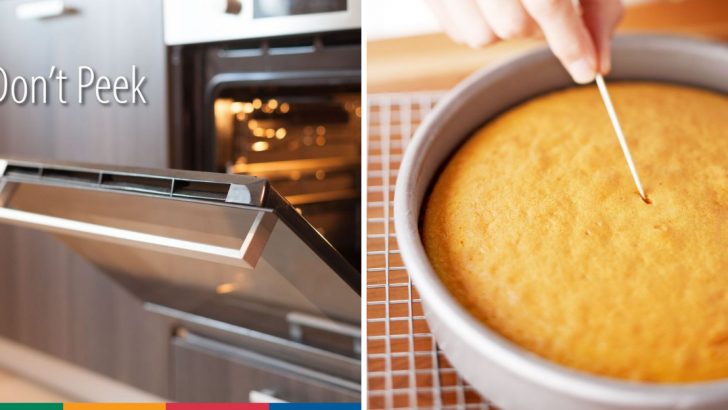If you’ve ever felt frustrated by baking failures, you’re not alone. Baking is both an art and a science that requires precision and patience. However, even seasoned bakers can fall prey to common mistakes.
This guide aims to identify 20 typical baking blunders and provides practical solutions to help you enhance your baking skills. Let’s explore these pitfalls and learn how to correct them for perfect baked goods every time.
1. Incorrect Oven Temperature
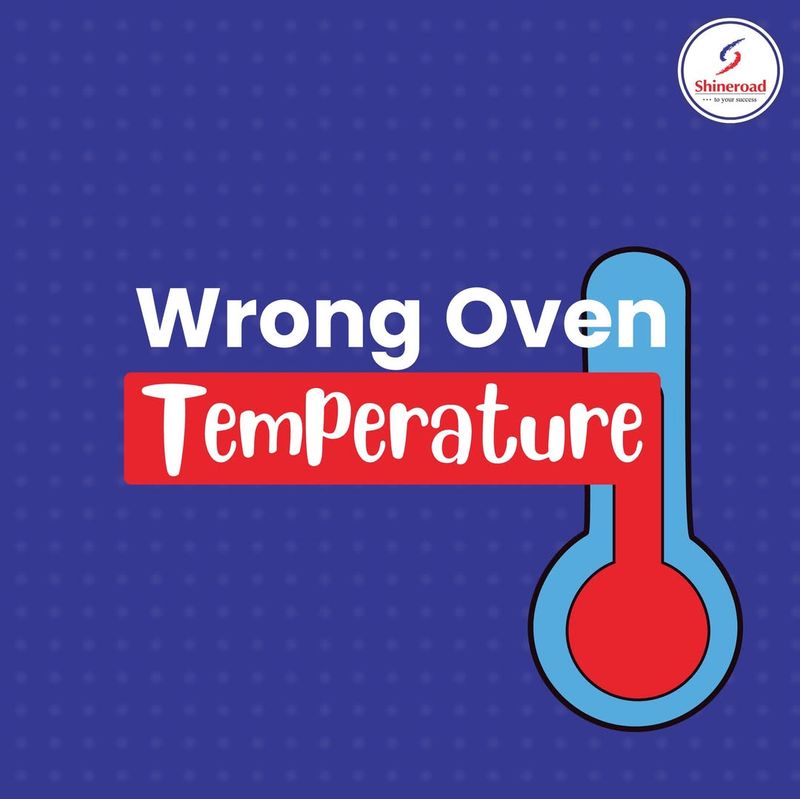
Where your oven’s temperature lies can make or break your bake. If the oven is too hot or too cool, your cakes may either burn or remain undercooked. Always use an oven thermometer for accuracy.
By relying solely on your oven’s built-in gauge, you might be deceived. Manufacturers’ calibrations often differ, leading to unreliable readings.
Hence, investing in a thermometer ensures that you can adjust appropriately, achieving consistent results. Baking requires precision, and this small step can drastically enhance your end product.
2. Overmixing Batter
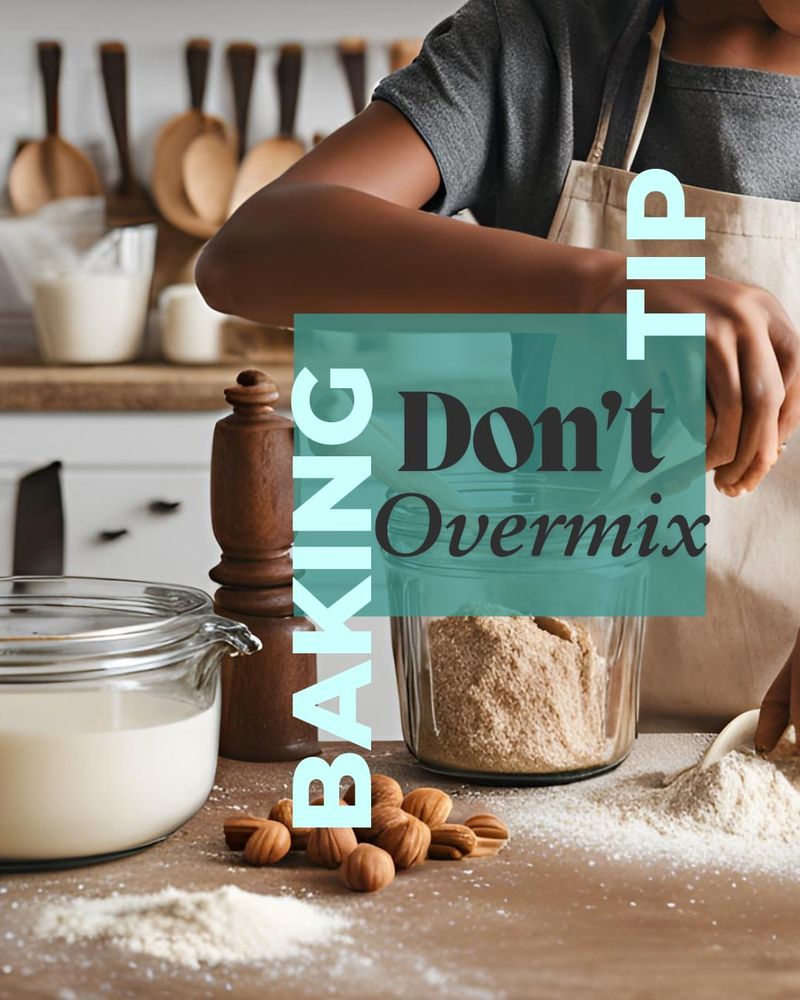
How you mix matters. Overmixing can lead to dense dough and tough textures. When stirring the batter too long, gluten develops excessively, causing baked goods to lose their tenderness.
When combining ingredients, aim for just enough mixing to incorporate. Notice a few lumps? That’s okay. It’s preferable to have a slightly lumpy batter than a rubbery end product.
However, remember that each recipe is unique. Follow instructions carefully regarding mixing times to maintain the intended texture and softness in your bake.
3. Using Cold Ingredients
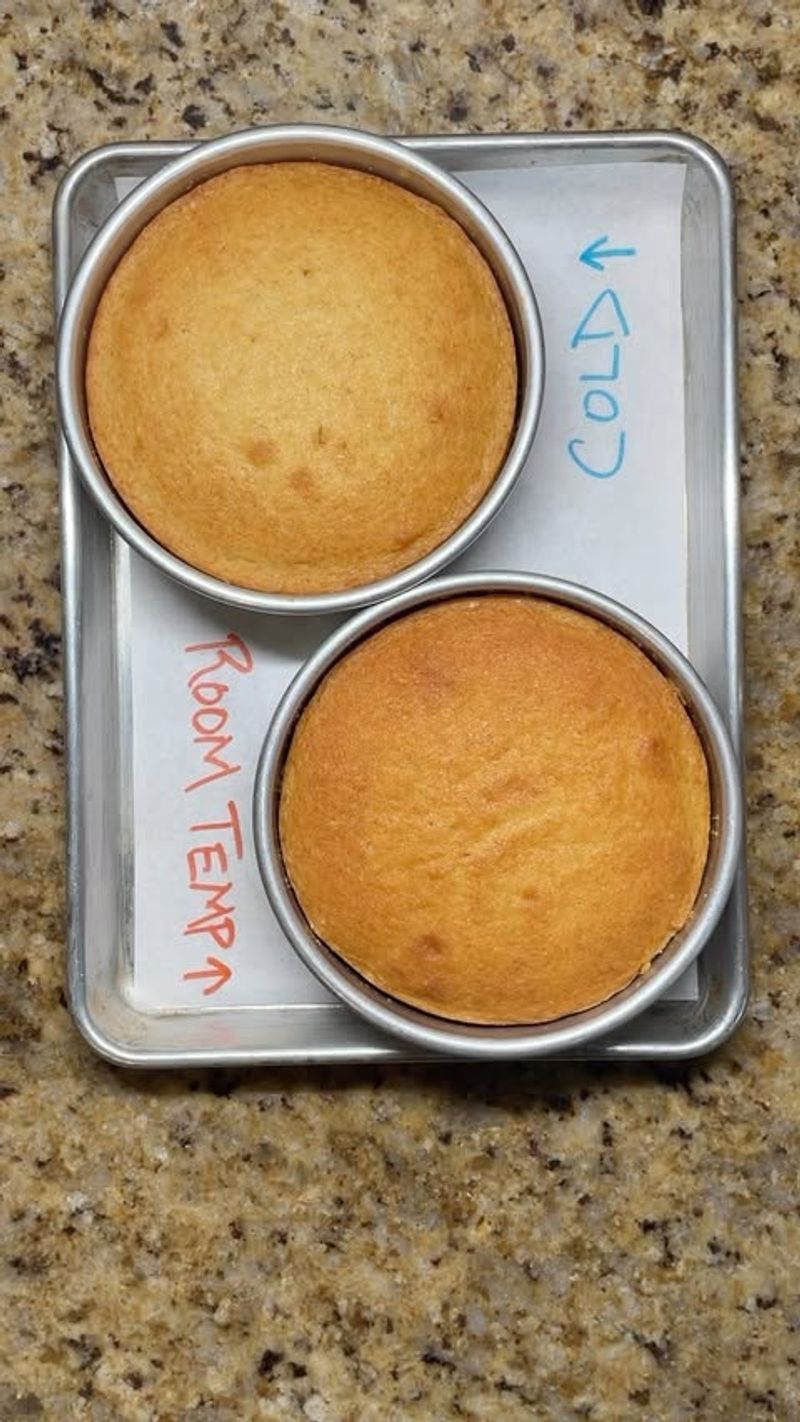
Using fridge-cold ingredients can sabotage your baking. Cold butter, eggs, or milk don’t blend well, leading to uneven texture. When ingredients fail to mix properly, the result is often dense or flat.
To avoid this, ensure your components reach room temperature before starting. How long? Typically, around 30 minutes to an hour on the counter does the trick.
Though it adds a small step, allowing ingredients to warm up can significantly enhance the evenness and rise of your baked goods.
4. Inaccurate Measuring
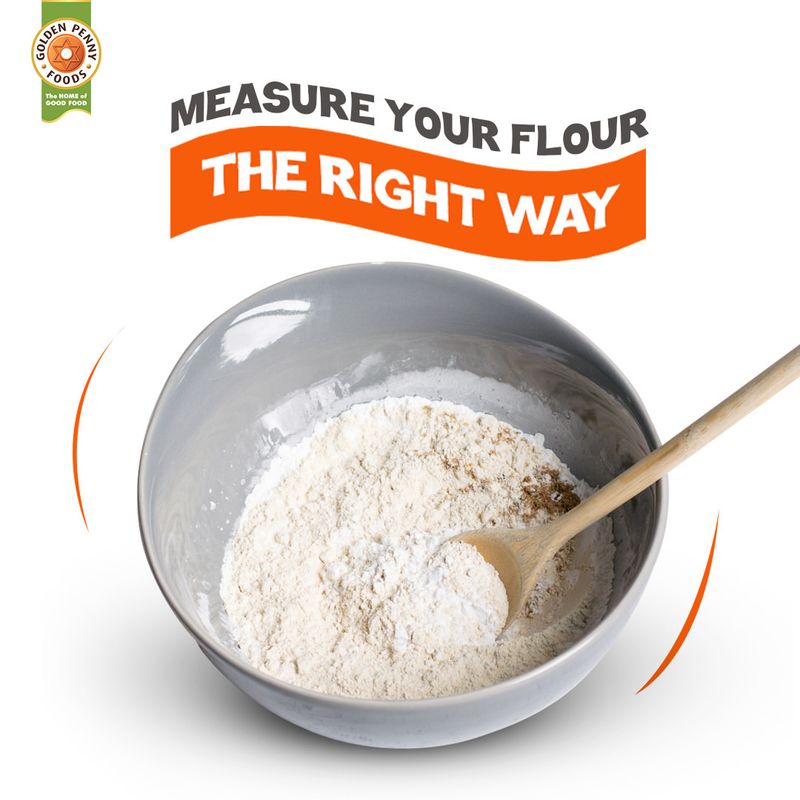
Let’s talk about food measuring—because, let’s face it, we’ve all been there. You grab that “1 cup” measuring cup, and somehow, you end up with a heap of flour that could feed a small army or a teaspoon of sugar that wouldn’t even sweeten your coffee.
Measure flour, sugar, and leavening agents with accuracy. Use dry and liquid measuring cups as needed. Scooping directly from a bag can pack the ingredient, leading to excess.
If possible, invest in a kitchen scale for the most accurate measurements. It ensures consistency, which is the key to replicating success every time.
5. Opening The Oven Door Too Often
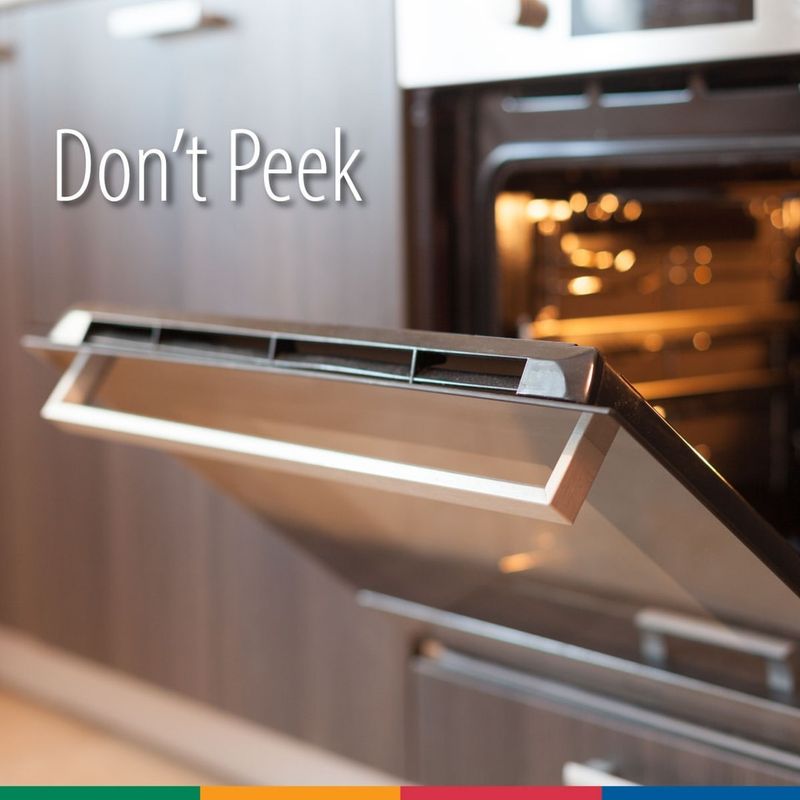
Though it’s tempting to peek, opening the oven door releases heat and affects baking. Fluctuations in temperature can cause cakes to collapse and cookies to bake unevenly.
How can this be avoided? Use the oven light to monitor progress without disturbing the heat. Set timers and trust them to minimize unnecessary door openings.
Be swift when you open the door. Preserve the environment inside to ensure even baking, preventing the dreaded sink of your otherwise perfect cake.
6. Substituting Ingredients Improperly
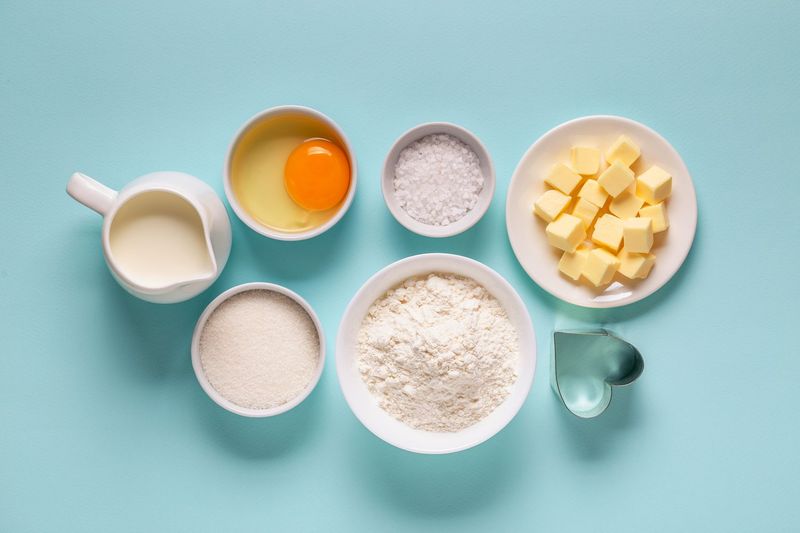
Where possible, stick to the recipe ingredients unless you know the science behind substitutions. Baking substitutes can alter the chemistry and outcome, leading to unexpected results.
Out of an ingredient, research compatible substitutes. For example, swapping oil for butter or honey for sugar can work if adjustments are made.
By understanding these nuances, you can make informed choices. However, blind substitutions often mean compromising texture, taste, and structure.
7. Forgetting To Preheat The Oven
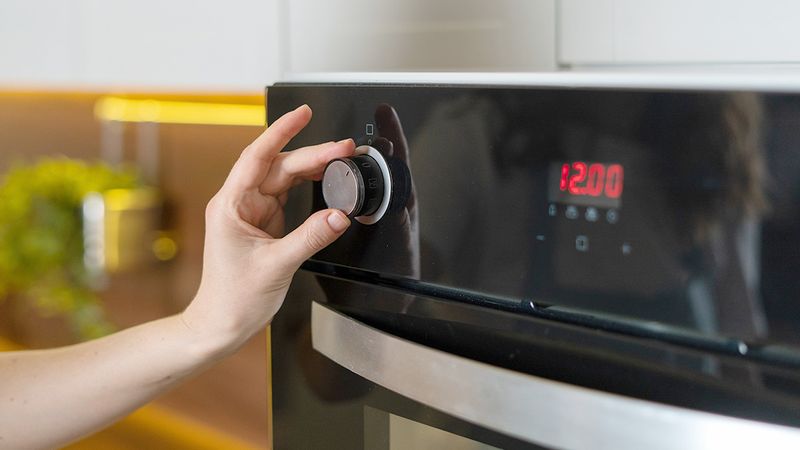
Preheating your oven is a non-negotiable step in baking. Skipping it means your baked goods start at a lower temperature, affecting rise and texture.
If you place batter or dough in a cold oven, the additional time it takes to reach the right temperature can cause uneven cooking.
Ensure your oven is at the correct temperature before you start. This guarantees that your baking process begins with the right heat, resulting in an even, perfect bake.
8. Ignoring Resting Times
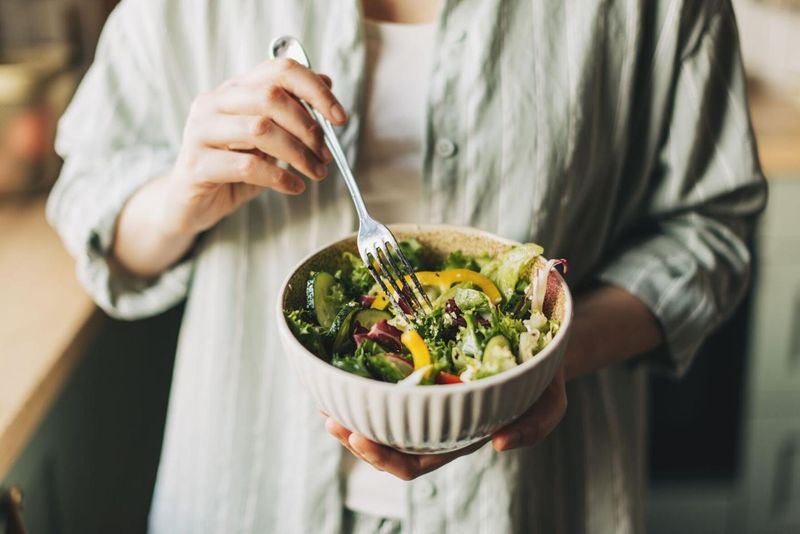
How often do you forgo resting times? Allowing your baked goods to cool or dough to rest can vastly improve texture and flavor.
The recipe says, “Let dough rest for 30 minutes,” and you’re like, “Yeah, right! Who’s got time for that?” You’ve got cookies to bake, cakes to frost, and maybe even a Netflix show waiting for you. So, you skip the resting.
Patience in baking pays off. Though waiting might be challenging, it often means the difference between a good bake and a great one.
9. Using Expired Leavening Agents

Expired leavening agents like baking powder or soda lose their effectiveness. If your cake or bread isn’t rising, check the expiration date on these key ingredients.
Test them if unsure. For baking powder, mix with hot water; for soda, use vinegar. If they fizz, they’re still active. Otherwise, replace them.
Remember, fresh leavening agents are vital for airy and light baked goods, so don’t overlook this crucial step.
10. Skipping The Sifting Process
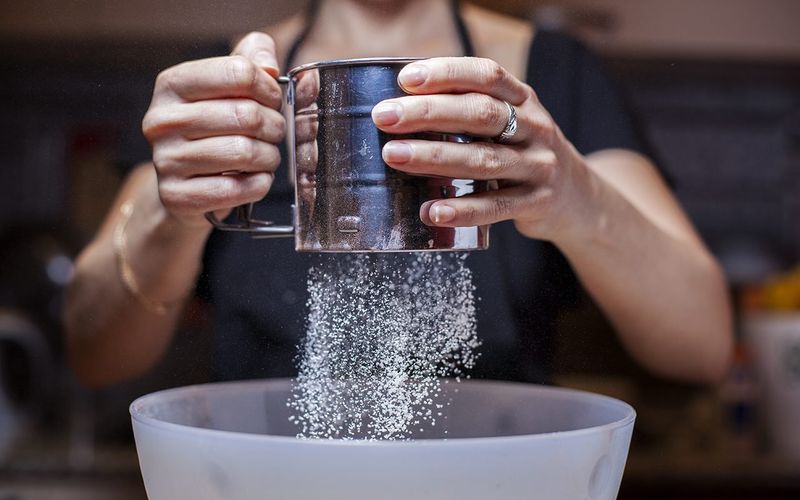
Skipping sifting seems like a time-saver, but it can lead to clumpy batters and dense textures. Sifting aerates flour and ensures even distribution of ingredients.
If a recipe suggests sifting, it’s to incorporate ingredients smoothly, preventing lumps and ensuring a light texture.
Though an extra step, sifting can make a noticeable difference in the quality of your baked goods. It’s a small investment for a superior outcome.
11. Neglecting To Grease And Flour Pans
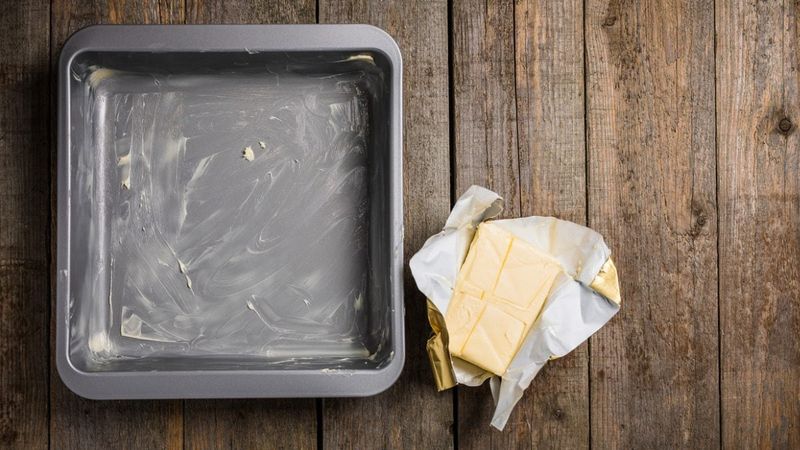
If you’ve ever had a cake cling to a pan, you know the disappointment. Properly greasing and flouring pans prevent sticking and ensure smooth removal.
Before pouring batter, grease with butter or oil and dust with flour. This creates a barrier that helps in easy release.
Where you might think it’s unnecessary, this simple preparation step can save your cake from a disastrous end, preserving its shape and texture.
12. Not Adjusting For Altitude
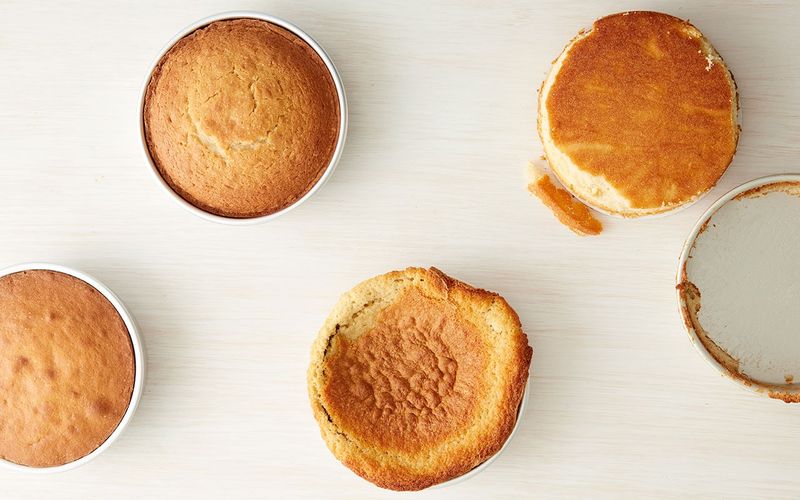
Baking at high altitudes requires adjustments in recipes. The lower air pressure can cause cakes to rise rapidly and then fall, leading to uneven textures.
If you’re in a high-altitude area, modify your recipes by reducing leavening agents and sugar, and slightly increasing liquid ingredients.
Hence, understanding these variations ensures that your baked goods turn out perfectly even in challenging conditions.
13. Not Allowing Yeast Dough To Rise Properly
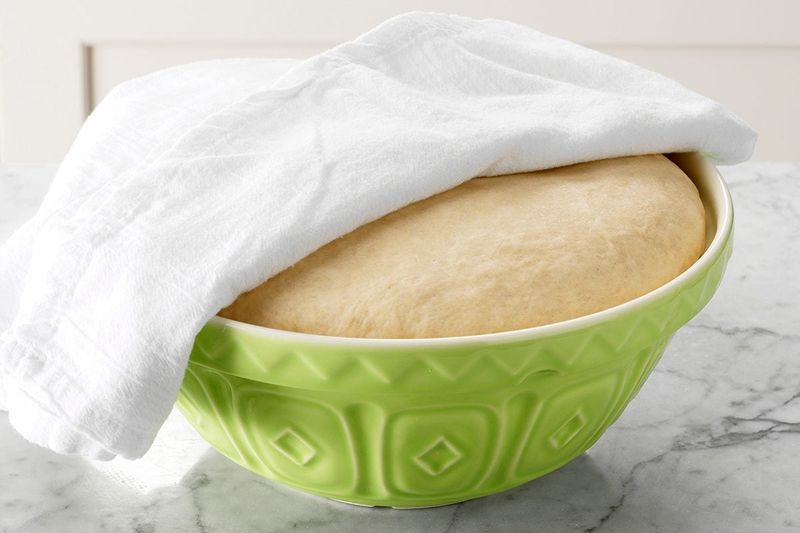
Ah, yeast dough. You know it’s the star of the show, but somehow, the waiting game feels like torture. So, what do you do?
You rush it!
You toss that dough into the oven or leave it in a warm spot for maybe half the time it needs. “It’ll rise faster, right?” you think. Spoiler alert: it won’t. Instead, you end up with dough that looks more like a pancake than the fluffy, airy masterpiece you had in mind.
Though it requires waiting, giving your dough enough time to rise ensures a light, airy texture that characterizes great bread.
14. Using Low-Quality Ingredients
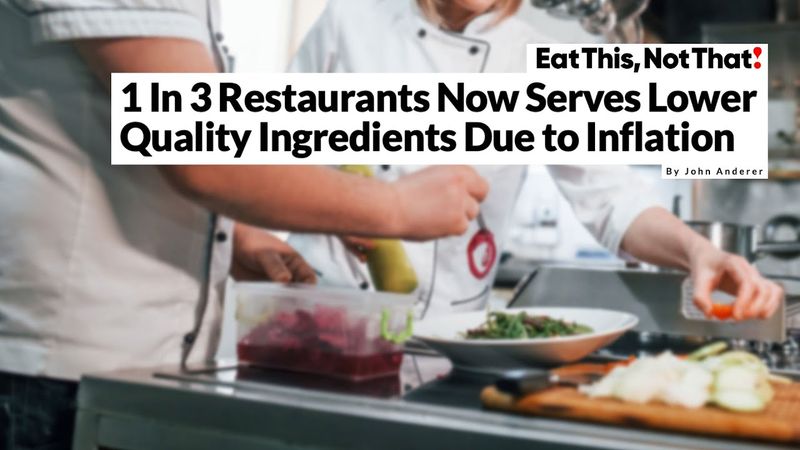
Quality matters. Using subpar ingredients can affect the taste and overall quality of your baked goods. If you opt for low-cost substitutes, expect compromised flavors.
Invest in the best ingredients you can afford, whether it’s real vanilla extract, fresh butter, or organic produce.
Though it might seem costly, the difference in flavor and texture is worth it. High-quality ingredients often make a noticeable improvement in your baking.
15. Improper Cooling Techniques
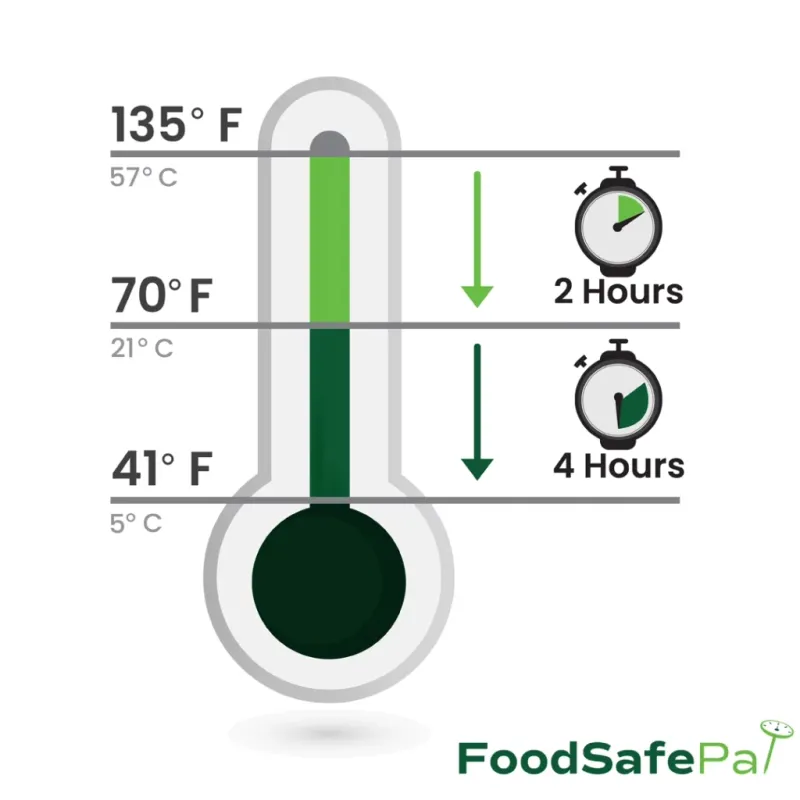
Cooling baked items correctly is as vital as baking them. If you neglect proper cooling, the texture and flavor can suffer.
Use wire racks to allow air circulation around your baked goods. This prevents sogginess and helps maintain crispness where needed.
However, remember that patience during cooling pays off. Avoid rushing this step to preserve the intended texture and flavor.
16. Overcrowding Pans
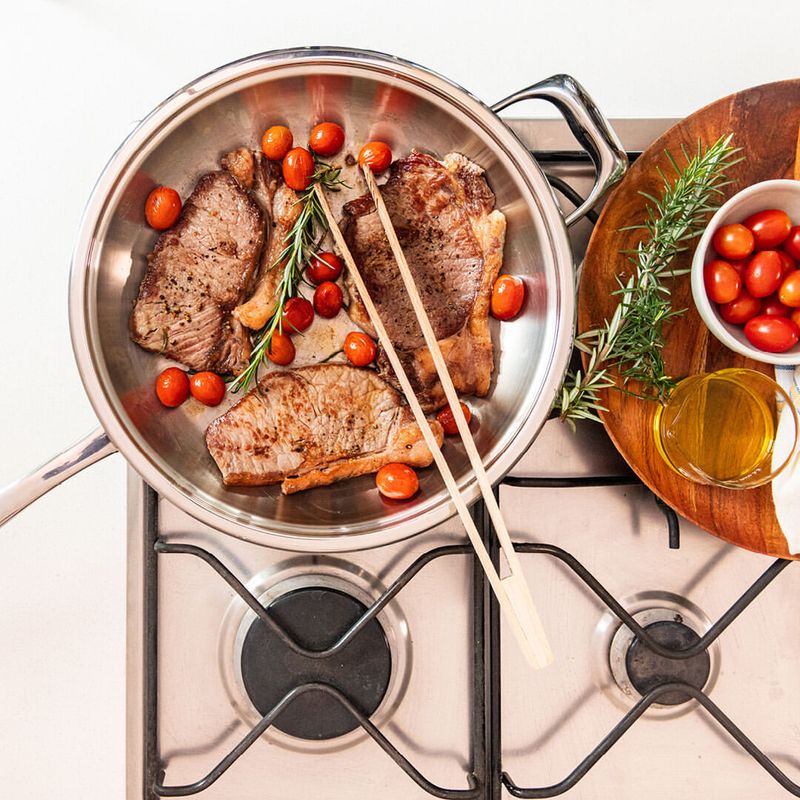
Placing too many items on a baking sheet leads to uneven cooking. If crowded, cookies can merge or bake improperly.
Space out items to ensure proper heat circulation around each. This results in even temperatures and consistent textures.
Though it means more batches, giving each item room during baking ensures uniform results, enhancing the quality of your final product.
17. Not Testing For Doneness
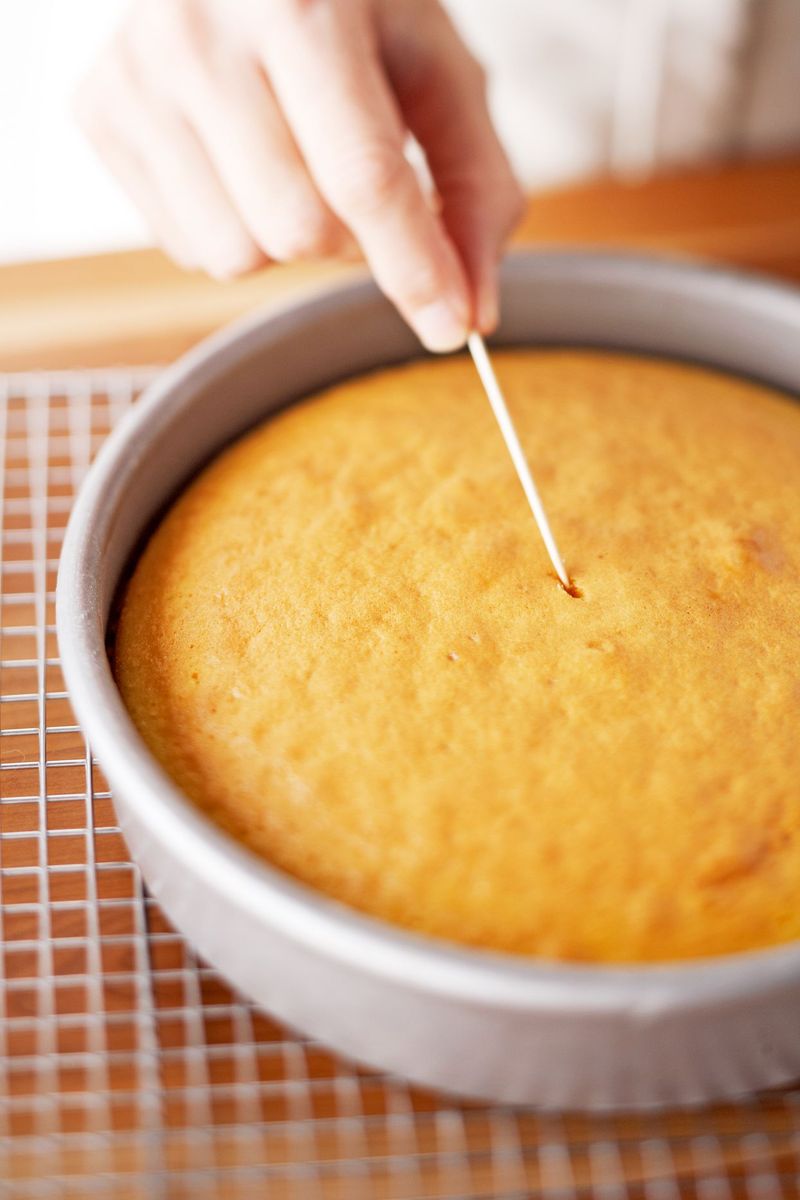
Testing for doneness is crucial. However, it’s a step often overlooked, leading to undercooked or dry results.
Use a toothpick or cake tester. If it comes out clean or with a few crumbs, your bake is ready. Moist batter indicates it needs more time.
It’s better to test it now than have a sad, raw center that will haunt your dreams. Trust me, your taste buds will thank you later!
18. Using The Wrong Type Of Flour

Selecting the correct flour for your recipe can influence texture and taste. Using bread flour for cakes results in a dense, chewy texture.
Understand the role different flours play. All-purpose is versatile, but other types have specific uses that can enhance or hinder your bake.
So next time, take a second to check the recipe, because choosing the right flour is half the battle. Your baked goods will thank you… and so will your taste buds.
19. Rushing The Baking Process
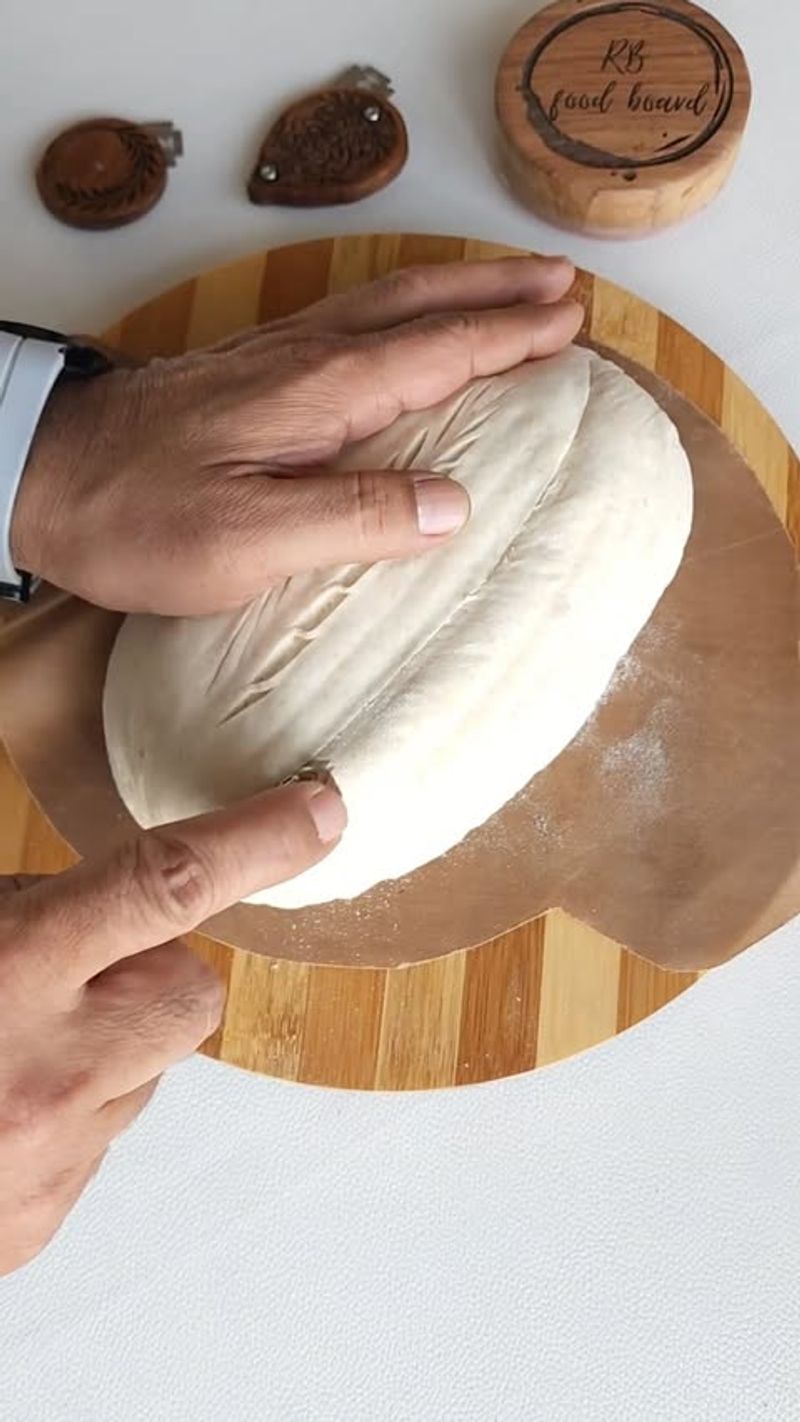
Rushing through baking compromises quality. Skipping steps or hastening the process, you may end up with uneven textures or flavors.
Baking is about patience. Each stage, from prep to cooling, requires time to achieve the intended results.
Remember, allowing each step its due time often leads to a superior end product. Enjoy the process for the best outcomes.
20. Not Considering Ingredient Temperatures
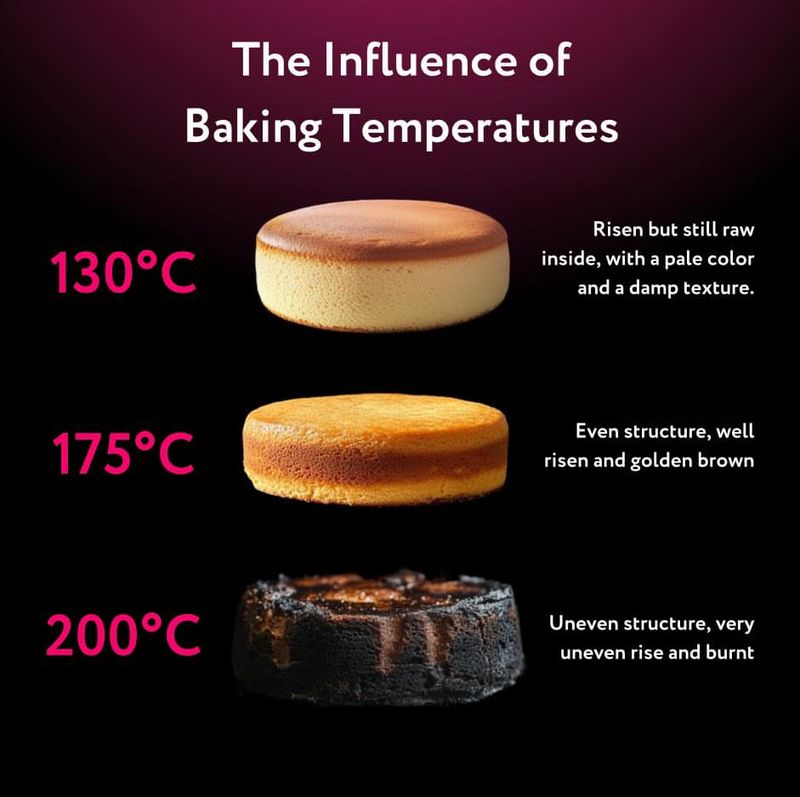
Using cold butter in a cookie dough or eggs straight from the fridge is like trying to start a race with a flat tire—nothing works the way it should.
Your dough gets too stiff, your cake doesn’t rise, and you end up with cookies that look like they’ve had a rough day. Next time, let your ingredients chill (literally) before you start baking. Your baked goods will be soft, fluffy, and not at all “oops, I forgot the basics” worthy.

